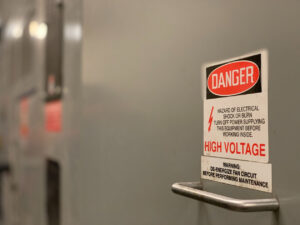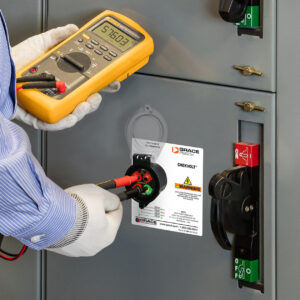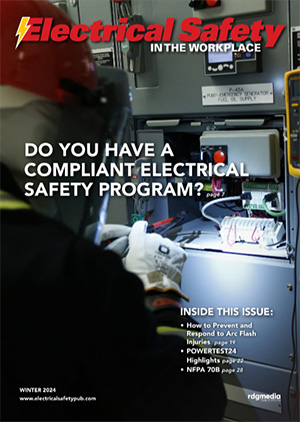Are you aware of the new requirements that went into effect in May 2023? By: Corey Hannahs, Contributor In the ever-evolving landscape of electrical safety, staying abreast of the latest codes and standards requirements is crucial to ensuring the well-being of both employees and the workplace. Electrical contractors, safety directors and business owners have not…
Read More >>Boundaries, PPE, training and proper victim care can save lives. Contributed by: Medshop For the past four decades, working with electricity has become safer in the United States. Ever since the National Fire Protection Association (NFPA)1 introduced its NFPA 70E® Standard for Electrical Safety in the Workplace, the number of fatalities and less serious injuries…
Read More >>For the past four decades, working with electricity has become safer in the United States. Ever since the National Fire Protection Association (NFPA) introduced its NFPA 70E® Standard for Electrical Safety in the Workplace, the number of fatalities and less serious injuries has dropped. However, despite this declining trend, electrical contractors, electricians, and other workers…
Read More >>“Protecting workers is what inspires GlenGuard every day to engineer comfortable and durable performance AR/FR fabrics for workwear. Although it’s a voluntary standard, all of our GlenGuard fabrics meet NFPA 70E requirements because GlenGuard believes that NFPA 70E is critical in the avoidance of unnecessary workplace injuries and fatalities.” – GlenGuard, (336) 227-6211 www.glenguard.com IMPORTANT TO…
Read More >>By Dean Austin, Contributor Safety in the workplace is multi-faceted. There are frequently different hazards encountered with each specific type of job or task. A safe working environment is required by the Occupational Safety and Health Act (OSHA), Section 5 (a). This section tells employers that they are to provide a work environment that is…
Read More >>By Dave Hernandez, Contributor As an engineering consultant specializing in arc flash studies, it is essential to understand the professional engineering licensure requirements governing this field. Conducting arc flash studies involves assessing electrical power systems for potential hazards, calculating incident energy levels, and implementing appropriate safety measures to mitigate the risks associated with arc flash…
Read More >>Contributed by Grace Technologies Lockout/Tagout (LOTO) procedures are crucial for ensuring electrical safety in the workplace while complying with NFPA 70E and OSHA standards. Compliance with LOTO regulations not only protects employees but also helps companies avoid costly citations and accidents. In this article, we will delve into the significance of LOTO safety, discuss best…
Read More >>How can NFPA 70E help employers comply with OSHA’s CFR 1910.333 Standard? NFPA 70E, Standard for Electrical Safety in the Workplace, provides guidance, such as determining the severity of potential exposure, planning safe work practices, arc flash labeling, and selecting personal protective equipment. What must an employer’s Electrical Safety-Related Work Practices include? An employer’s Electrical…
Read More >>By George T. Cole, Contributor Some readers may be wondering about the apparent contradiction or confusion with the title of this article but as we progress, the accuracy will become clear. The term “de-energized” is common among electrical workers but understanding its significance can vary greatly depending on the person you speak with. However, did…
Read More >>By Derek Vigstol, Contributor When it comes to arc flash risk assessment, the truth is that a properly labeled environment is a safer environment than one without arc flash hazard labels. When the safety of an employee is at stake, employers can’t be over prepared. There are two options here, perform the arc flash risk…
Read More >>Leaders in Electrical Safety
• Aramark
• Bowtie Engineering
• Enespro
• Ericson
• I-Gard Corporation
• IRISS
• KERMEL, INC.
• Lakeland Industries
• MELTRIC Corporation
• National Safety Apparel
• National Technology Transfer
• Oberon
• Saf-T-Gard
• SEAM Group
Subscribe!
Sign up to receive our industry publications for FREE!










